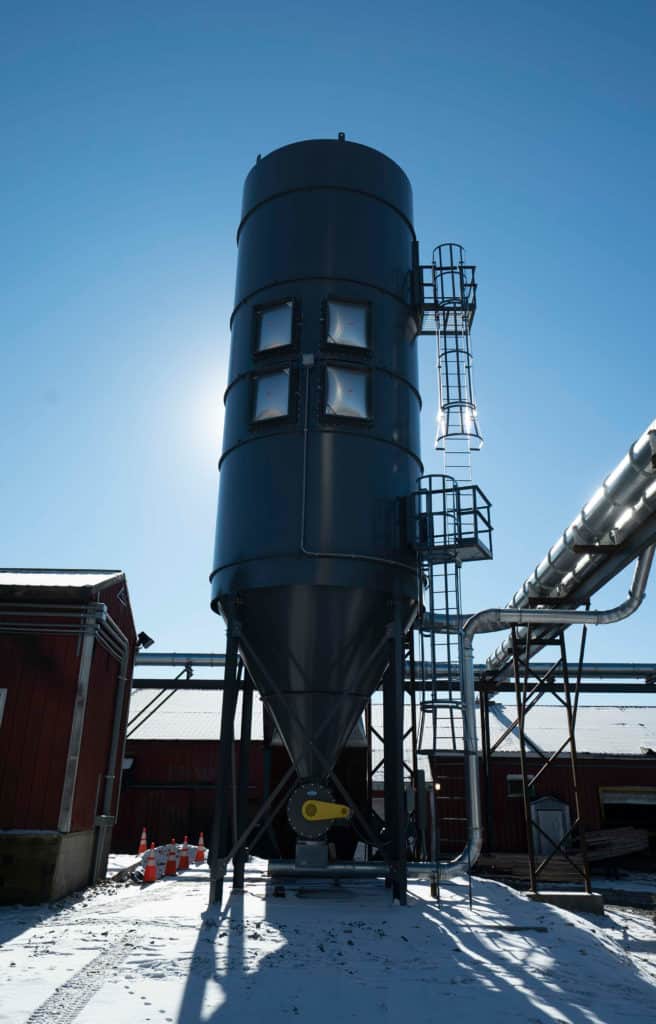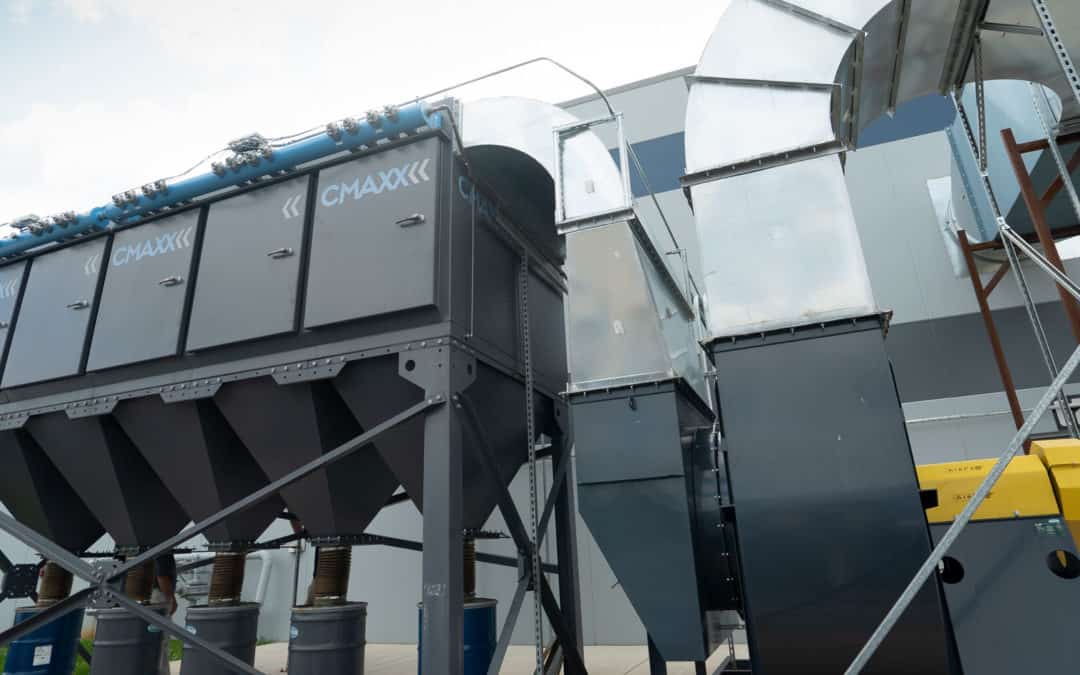
by Erin Long | Jun 26, 2019 | Plasma Cutting
At Fabtech in Chicago, Lee Adams of Leeco Solutions met representatives from a metal fabrication company in Cincinnati, OH who were struggling with their dust collection system. The company operates two robotic plasma cutting booths, cutting holes in ½ inch pipe. The dust collector seemed to be removing the fumes well enough, but there was a problem.
Short Dust Collector Filter Life
Running 8 hours per day, the filters in the dust collector needed replacing after only 80 hours of operation. Many manufacturers get six months to a year out of their filters before changing them. This company was spending enough on replacement filters to pay for a new dust collector.
Lee visited the facility and measured the airflow at each of the plasma cutting booths. He discovered that the system could capture the fumes. However, it failed to keep the filters clean, causing them to stop functioning.
Filter Cleaning Efficiency Required for Plasma Cutting Fumes
Lee examined the existing dust collector, a CMAXX competitor, a 12-cartridge collector with vertical filters and reverse pulse cleaning. He suggested replacing this collector with a 12-cartridge CMAXX for the plasma cutting operation.
Lee’s contact at the company was skeptical. He needed a guarantee that the new dust collector would give him 2000 hours of filter life. Lee knew the CMAXX could do the job.
CMAXX Replaces Failing Competitive Unit
The competitor’s collector was replaced with a CM012. The new dust collector worked as planned, easily handling the fumes from both plasma cutting booths.
Now, the next step was to wait. Would filters that used to last a week be able to give the company the 2000 hours of operation that Lee had guaranteed them?
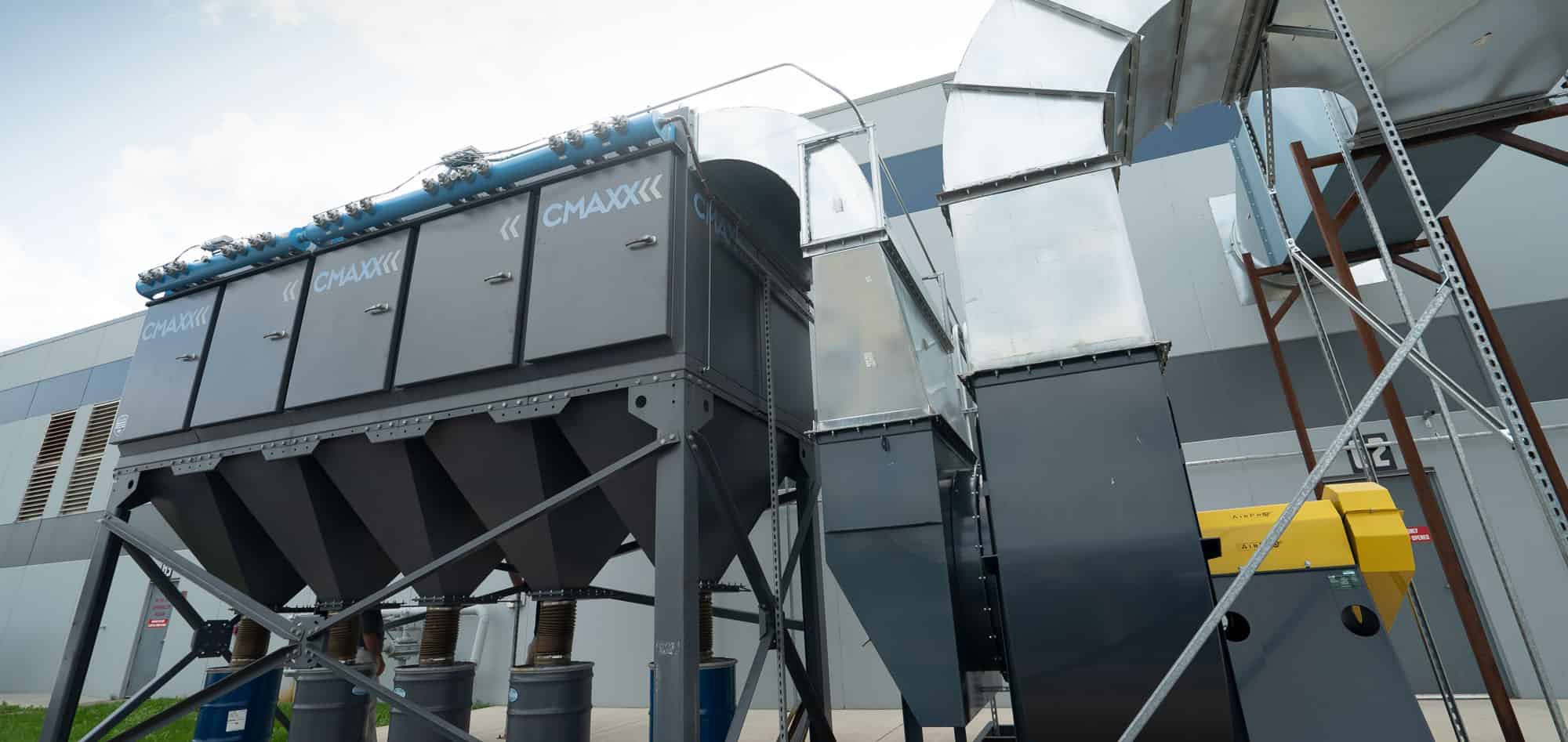
Success and Satisfaction for Plasma Cutting Booth Customer
The CMAXX system on the plasma cutting booths has currently been operating for an entire year. Lee’s contact at the company reports “It’s been running a year and is setting at 1.9″ WC. I’m going to get two years out of these filters!”
Instead of needing to be changed after a week, these filters are still going strong after a year. Differential pressure readings show that they’re not going to need changing any time soon.
This example proves that to solve a problem, you don’t always need a bigger dust collector. Sometimes you just need a better one. A superior product with a better cleaning system, the company’s new CMAXX left the competition in the dust.
Learn more about plasma cutting fume extraction.
Read our white paper on plasma cutting.
Read more
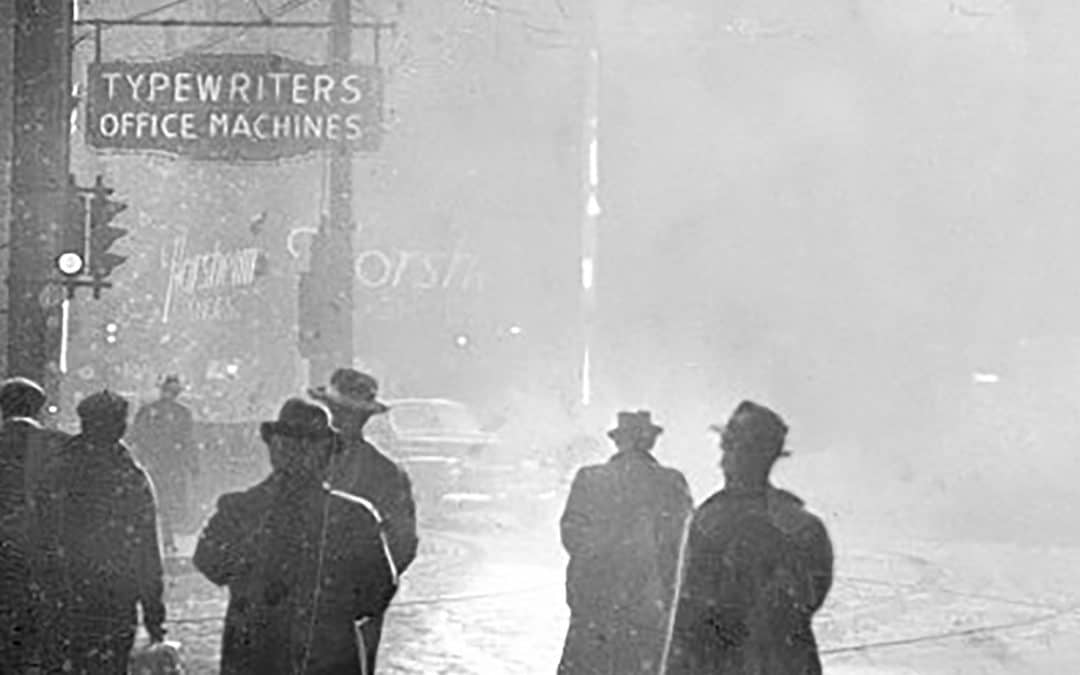
by Erin Long | Jun 19, 2019 | Uncategorized
The history of dust collection begins with a problem that needed to be solved.
It was the early 1800’s in Pittsburgh, PA. Sulfur and other fumes from burning bituminous coal covered the city with some of the worst smoke pollution in the country. Pittsburghers were used to constantly cleaning the black dust off everything, even inside their houses. By 1880, millions of tons of coal were being burned in the city each year, giving it some of the worst air quality in the United States.
People who grew up in the city in the early 1900’s report cleaning black dust and grime off their shoes and clothes, gray curtains that could never be kept white, and buildings and statues stained black. Workers from the steel mills came home covered with black coal dust. In the winter, gray snow fell over the city. Bituminous coal was plentiful in the area but is the dirtiest form of coal when burned.
Regulations were passed in Pittsburgh and other industrial cities, but without a suitable replacement, the factories and mills continued burning coal. Companies made some attempts to filter coal dust out of the air, but the amount of dust overwhelmed basic cloth filters. Simple cyclones, where air movement inside the chamber causes particles to drop out of the air flow, only captured large dust and didn’t restrict the flow of fine dust and smoke. Tubes or sheets of fabric became immediately coated with dust.
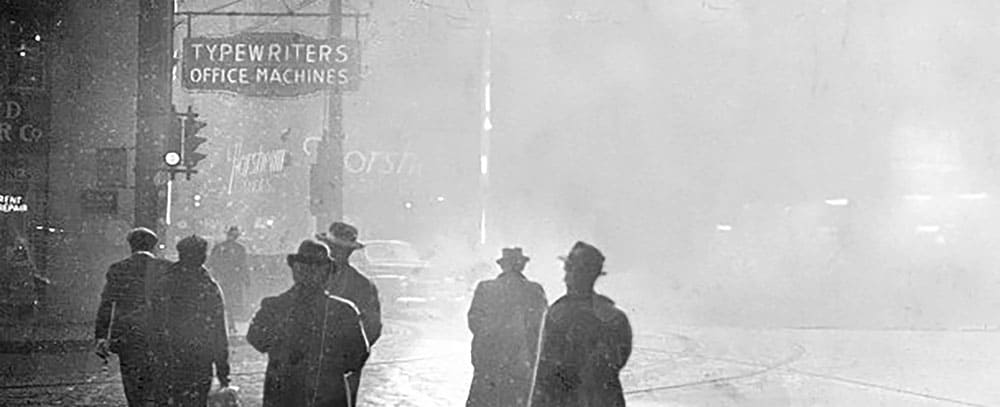
NEW DUST COLLECTION OPTIONS
It wasn’t until the 1920’s that inventors began to patent filtration systems to remove dust more effectively. These early dust collectors needed to be able to clean their filters to keep them from being overwhelmed with dust. In the early history of dust collectors, this cleaning worked by hanging filters from a frame that would periodically shake them to get rid of excess dust.
Shaker bags continued to be used for many years, but lack of efficiency and constant maintenance on the moving parts limited their usefulness. The biggest producers of dust included industries like foundries and steel mills, dealing with thick, heavy dust that shaker bag collectors struggled to handle.
In the mid-1900’s, environmental regulations became more common and major polluters came under pressure to clean up the massive amounts of dust they generated. Shaker bags and basic fabric filters could not handle the task. Pittsburgh, famous for its steel mills and still burning massive amounts of dirty bituminous coal from nearby mines, badly needed a new method of dust collection.
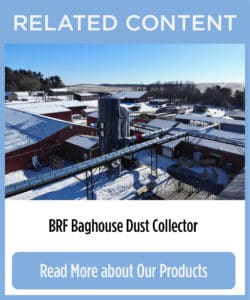 Reverse air baghouses were invented around this time, shortly followed by pulse jet baghouses. These provided tremendous improvements in dust collection by setting up an arrangement of filtration bags that could be cleaned by fans or compressed air pulses instead of shaking. These methods kept the bags cleaner and increased the efficiency of the filters. These types of baghouses came into regular use in the 1950’s and 1960’s, but there were still not very many requirements for companies to use them.
Reverse air baghouses were invented around this time, shortly followed by pulse jet baghouses. These provided tremendous improvements in dust collection by setting up an arrangement of filtration bags that could be cleaned by fans or compressed air pulses instead of shaking. These methods kept the bags cleaner and increased the efficiency of the filters. These types of baghouses came into regular use in the 1950’s and 1960’s, but there were still not very many requirements for companies to use them.
The invention of baghouses brought a new era in the history of dust collection. Both types of baghouses are still in use today, and they continue to work well. They are especially useful in applications with high temperatures and high humidity. Bags are now made of a wide variety of materials specialized for different needs. They are still workhorses of the dust collection industry.
A NEW ERA OF REGULATIONS
In the 1970’s and 1980’s, increases in regulations required companies to work harder to clean up dust, fume, and chemical emissions. Cartridge dust collectors provided a smaller profile with highly efficient pleated filters that offered a larger surface area for filtration. These collectors took advantage of a pulse jet cleaning system like the one used on some baghouses. Cartridge collectors became popular for their smaller size and the ease of changing filters compared to baghouses. They are used on many dust applications, especially those producing very fine dust and fumes.
With increasing regulations on hazardous material emissions, filters like HEPA (high efficiency particulate arrestor) became more common. These filters are extremely efficient but will also become quickly overloaded in any heavy use setting. Common uses include hospital, pharmaceutical, and food processing clean rooms. In the history of dust collection in industry, they have become useful as after-filters for applications with very toxic materials like lead dust, capturing anything that gets past the regular filters.
Industries that need to control chemical air pollution may use options such as wet scrubbers or electrostatic precipitators. Wet scrubbers use water or other liquids to stick to chemicals in the air flow and cause them to settle out of the air. Wet scrubbers are much higher maintenance than dry dust collection systems, but they may be necessary for chemical contaminants. Electrostatic precipitators use high voltage direct current to give particles an electric charge, causing them to stick to electrodes in the collector.
These high-tech entries into the history of dust collection are useful for specific applications. Dry dust collectors like cartridges and baghouses will not usually work for mist or harsh chemicals. Wet scrubbers are used when the air contains either a gas or gas mixed with particles. Electrostatic precipitators are often used in coal and oil power plants and in refineries. These types of systems work best when the electrical conductivity and resistance of the particles stays consistent.

FROM THE HISTORY OF DUST COLLECTION TO THE FUTURE
In cities like Pittsburgh with a long history of dust collection issues, every possible type of air pollution control has been employed to make the city clean and healthy. Pittsburgh has traded most of its coal-burning steel manufacturing for newer, cleaner industries. It has been rated as one of the country’s most livable cities by many publications. Technology, research, and healthcare have become dominant industries, but the legacy of the city’s heavy industrial days remains with plenty of factories still in operation. Behind or off to the side of many of these factories, you’ll see a dust collector at work, helping Pittsburgh keep moving away from the grime and dust of its history.
Companies that manufacture dust collection systems are concerned with air quality. They are also concerned with safety. The industry keeps making new innovations that prevent people from being injured by combustible dust fires or explosions. New dust collectors like the CMAXX and BRF baghouse are safer and more efficient than ever before.
Read more
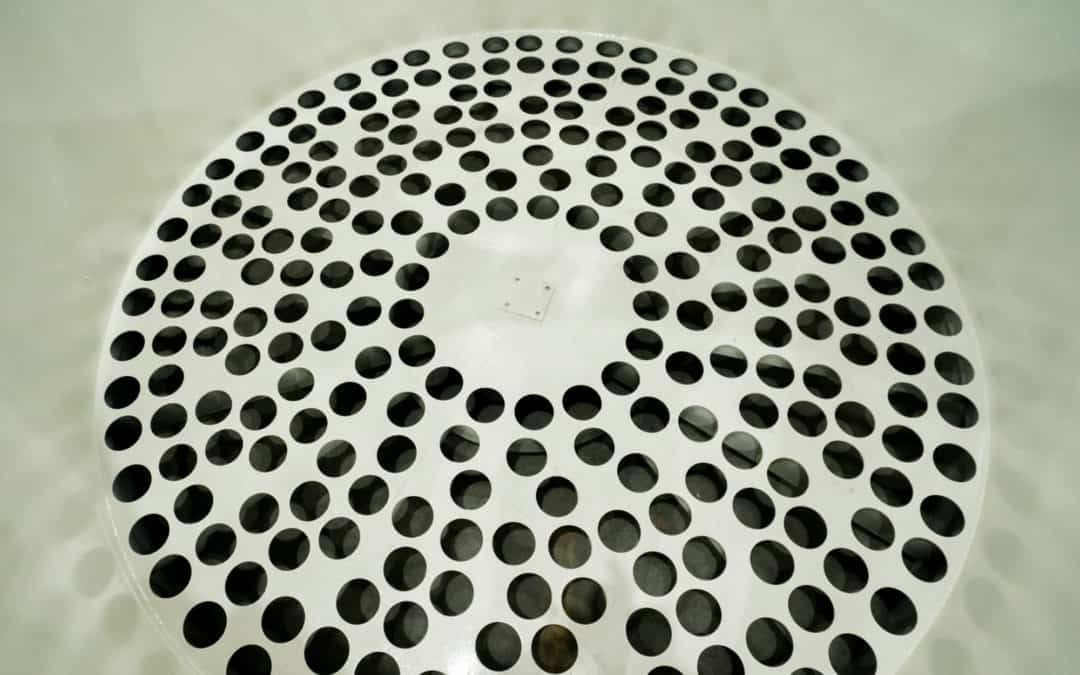
by Erin Long | Jun 5, 2019 | Uncategorized
For a baghouse to function correctly, system designers need to perform a bag filter calculation. So how do you calculate the air-to-cloth ratio of your bag filters? Some websites offer simple formulas to estimate the correct air-to-cloth ratio. However, a good system designer knows that every application and every material is a little different.
System designers also do a compressed air requirement calculation for bag filters. Because without proper cleaning, bags become covered with dust which throws off the calculated air-to-cloth ratio. Therefore, getting these two calculations right makes sure your baghouse runs at full efficiency.
 How to Calculate Air-to-Cloth Ratio in Bag Filters
How to Calculate Air-to-Cloth Ratio in Bag Filters
An air-to-cloth ratio compares the amount of air going through a square foot of filter area. If you know the total CFM of the system and you know the amount of filter area you have, you can calculate this ratio.
For example, if you have 10,000 CFM through your collector and 5,000 square feet of filter area, your ratio is 10,000:5,000. But it’s much simpler to convert this to a ratio of 2:1. The air-to-cloth ratio can be anything from 1:1 to 3.5:1.
What makes the difference in bag filter calculation? Often, it’s the type of dust that the system collects. Different types of material will change how you calculate the air-to-cloth ratio in filter bags. Most companies that design baghouses know the general cloth area of their filter bags. A filter bag calculation can also be made because filter bags are round. If you know the diameter of the bag, multiply this diameter by 3.14 to get the circumference. (Think back to high school math and the circumference of a circle.)
Therefore, the circumference of the bags (diameter of the bag x 3.14) multiplied by the length of the bag will give you an approximate bag surface area. There are 144 square inches in a square foot. Since the diameter of the bag will be measured in inches, the bag surface area must be measured in inches too. Use this surface area in the air-to-cloth ratio.
Ask the Manufacturer First
You may never need to know how to do these calculations. Fortunately, many filter bag manufacturers know the general surface area of their bags. Also, a system designer usually knows the surface area of bags that need to go in a collector. What you do need to know is why the surface to air ratio matters. Consequently, a wrong bag filter design calculation can result in a collector with a ratio that causes serious problems.
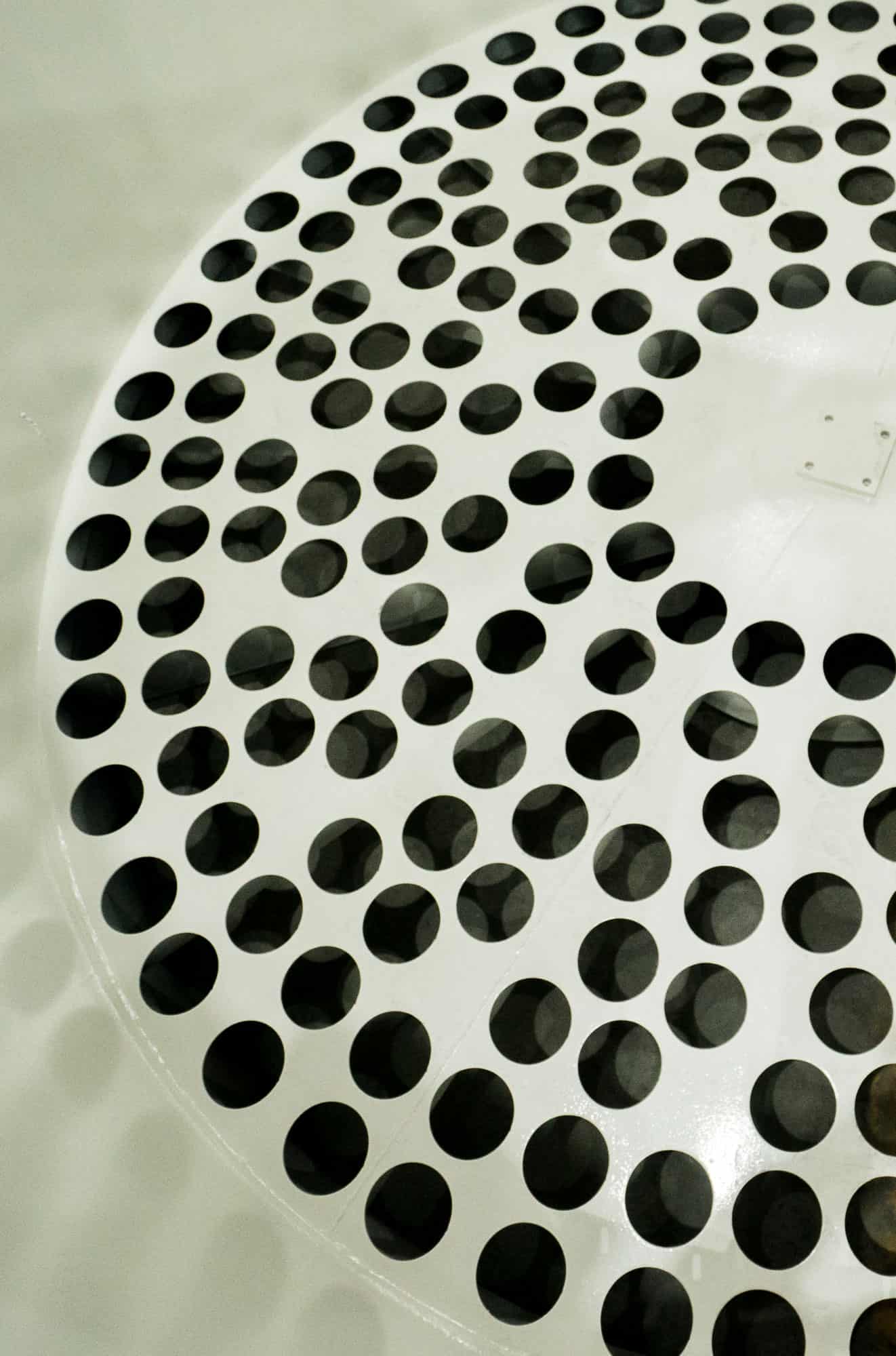 Importance of Correct Air-to-Cloth Ratio Calculations
Importance of Correct Air-to-Cloth Ratio Calculations
The correct air-to-cloth ratio determines the efficiency and life span of your filters. Above all, buying and replacing filters may be the most expensive and time-consuming part of dust collector maintenance. The correct bag filter calculation extends the life span of your filters and keeps them working efficiently. Not having enough cloth for the air in your system results in low filter life and damaged or overloaded filters.
Different materials will require different air-to-cloth ratios. Similarly, different applications also demand changes to the air-to-cloth ratio. An ambient system usually filters the air with a low overall amount of particulate. In contrast, a source capture on plasma cutting collects much more material. Wood, fiberglass, and other materials affect filters differently. Therefore, you should consult with someone who has experience in air-to-cloth ratio calculations for your type of material.
Compressed Air Requirement Calculation for Bag Filters
Even if a system has the correct air-to-cloth ratio, it still needs to clean the filters correctly. For instance, some baghouses are cleaned with airflow from a fan. The fan sizing will be part of the overall system design. Other baghouses use pulses of compressed air to clean the filters. For these, the calculation of compressed air requirements is important.
Compressed air requirement for bag filters determines how long the bags will last and how efficient they will be. Some compressed air cleaning systems are timer operated. This means that pulses of compressed air clean the bag filters at a designed time. Dust collectors can also have differential pressure pulse control. In this case, a rise in the differential pressure triggers a sensor to activate a pulse. The compressed air only pulses when the filters need it. This means that the compressed air requirement for the baghouse is lower.
The size of the piping and valves used can also affect the compressed air. A baghouse should be operated with the bag filters, valves, and other equipment that came with the system, or an appropriate replacement from the manufacturer.
Valves and other parts of the compressed air system can develop leaks and waste compressed air. As a result, there will be less efficient pulsing. Therefore, systems should be checked regularly for any leaks or failing valves. The compressed air requirement calculation for bag filters is only accurate if the entire system operates as designed.
Read more about bag filters here.
Read more
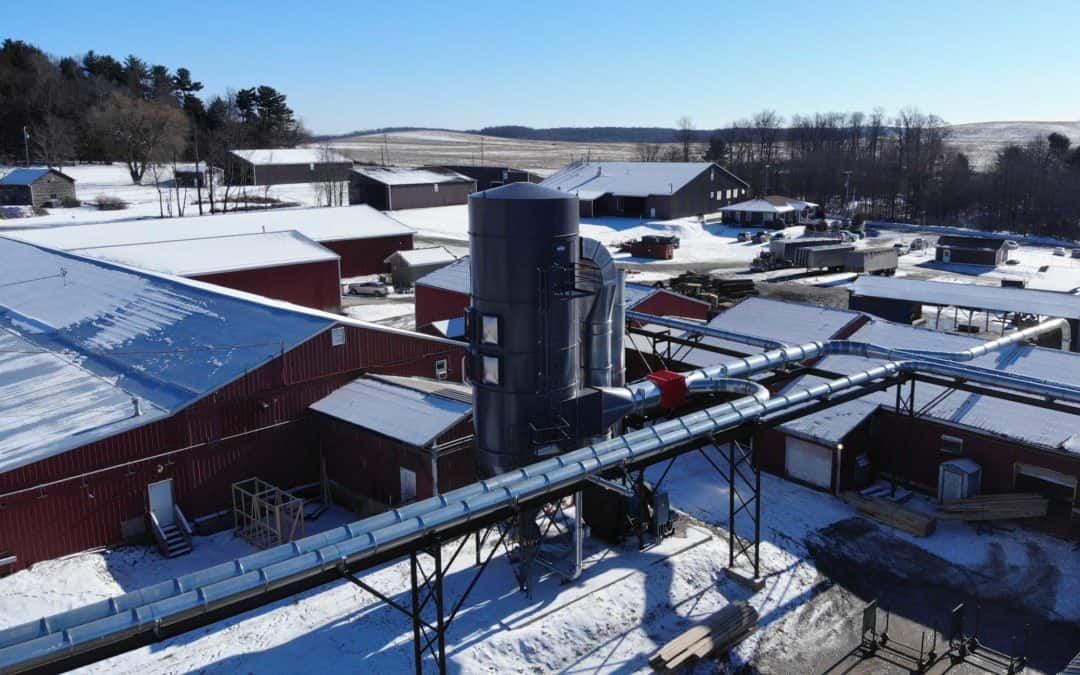
by Erin Long | Jun 5, 2019 | Case Studies
A sawmill company with facilities in Pennsylvania and New York had a challenging dust problem. Fine sawdust from their band mills was filling the air. The constant production of dust created an unpleasant work environment for employees. As a result, the facility needed a form of sawdust collection.
Ryan is responsible for creating a better, healthier environment for sawmill employees. But he wasn’t going to rush in with a hasty solution. He was going to take the time to do it right. So he would work with equipment suppliers to design the system his company needed.
In the process of designing a dust collection system, Ryan worked with Hermance Machine Company. Through them, he learned about Imperial Systems, Inc and their BRF baghouses. In addition to the BRF, he also looked at the products made by several competitors to compare them.
Ryan paid a visit to Imperial Systems. He got a chance to look at the BRF baghouse and the manufacturing process. “I saw a good product,” he says. He also liked the idea of working with a local company.
Ryan had been working on the air filtration project for several years. He planned out the ductwork, fans, and other details of the system. A significant part of the investment would be the baghouses. So it was important to choose the right company to build them.
Sawdust Collection Solution
Imperial Systems provided Ryan’s company with two reverse-air 14-foot BRF baghouses as well as airlocks, one for each of the two locations.
“Having this system has completely changed the environment of the sawmill,” Ryan says. “It’s gone from being a poor environment for employees to having crystal clear air.”
Ryan has succeeded in his goal of making the sawmills a better, healthier place to work for everyone. He says that the BRF baghouses are working exactly as he expected them to. He’s certainly satisfied with the help and service Imperial Systems has provided. This includes working with him through some glitches to make sure everything works the way he needs it to.
At Imperial Systems we take pride in working with our customers throughout the process, and our service doesn’t stop when the equipment install is complete. We’re there to work with you, iron out any bugs, and help you meet your air quality and safety goals. Sawdust collection is only one of many applications for which we have solutions. So contact us today about your challenging dust or fume problem.
Learn more about woodworking dust collection.
Read more
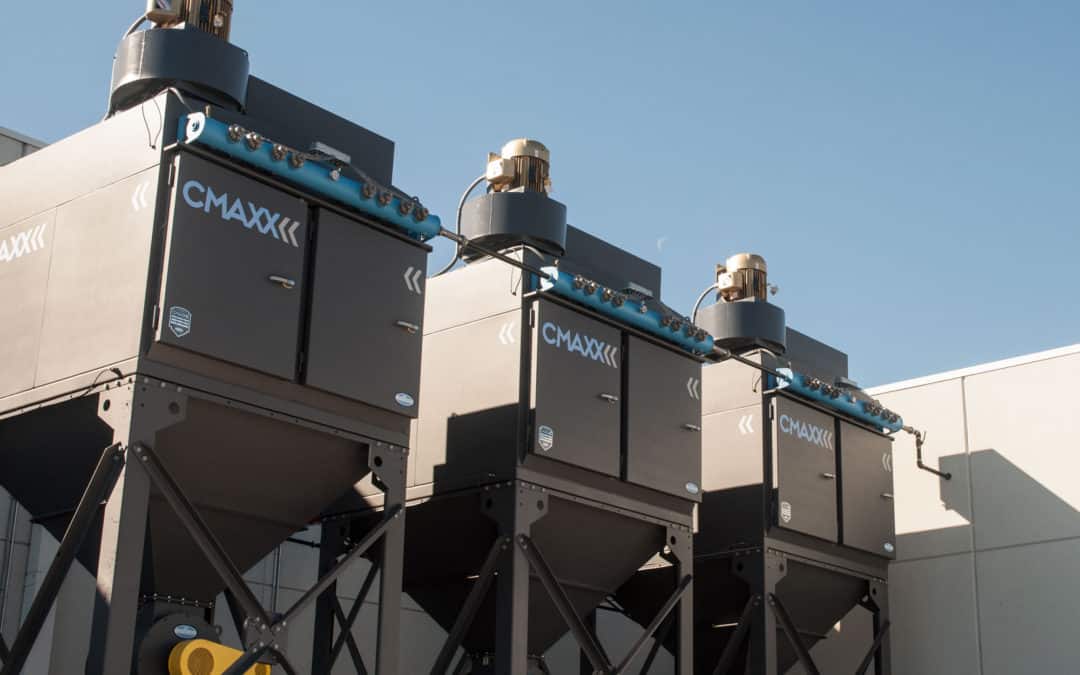
by Erin Long | Jun 4, 2019 | Abrasive Blasting
The Problem
Abrasive blast equipment operation continued to be a problem for a pipe manufacturer in Arkansas. The company produces pipe for water, gas, oil, and other industrial markets. They use abrasive blast cabinets in their production to clean the metal surfaces. Round steel shot is the abrasive blast media. However, this fugitive material accumulated in the facility. Their existing dust collector was also pulling it up into the ductwork. As a result, the weight strained the duct.
Further, the company required a system to handle multiple capture points on equipment like bucket elevators and hoppers. They needed to replace the existing dust collector. Initially, they received quotes from other companies who told them they needed a 9,000 CFM system. Unconvinced, the company chose to contact more experienced dust collection experts. They asked the specialists at Air Solutions to come in and review the situation. They wanted to eliminate their problems with a properly designed abrasive blast dust collector system.
The Solution
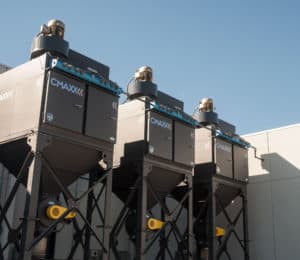
Air Solutions conducted a survey and decided that the system must be rated for 11,000 CFM. It also needed to have air bleed-in ports to keep the system from picking up the steel shot. This arrangement would allow the adjustment of airflow. The control measure ensures that the system picks up dust and other material but not the abrasive blast media.
The survey also determined that existing dust collection on capture points like bucket elevators and feed hoppers was inadequate. So the new system provided dust collection at these points as well as on all the abrasive blast cabinets.
Air Solutions installed a CMAXX dust and fume collection system. They designed an 11,000 CFM system to provide plenty of airflow to all the points of capture. Also, they incorporated air-bleed ports. Enabling adjustability of the airflow, these prevent the system from picking up heavier shot blast media.
Abrasive Blast Equipment No Longer a Concern
The new system certainly creates proper airflow to all capture points on the system. The company uses the bleed-in ports to adjust the amount of ambient air being pulled in. Airflow is now adjustable, helping to make sure they capture dust, not shot blast media.
Increasing the airflow from the proposed 9,000 CFM to 11,000 CFM was key. It makes sure the system is able to handle all the capture points. In addition, the bleed-in ports provide the option to control airflow at various points. The result is complete control over the system and a safer work environment.
Learn more about abrasive and shot blast dust collection.
Read more







 Importance of Correct Air-to-Cloth Ratio Calculations
Importance of Correct Air-to-Cloth Ratio Calculations
